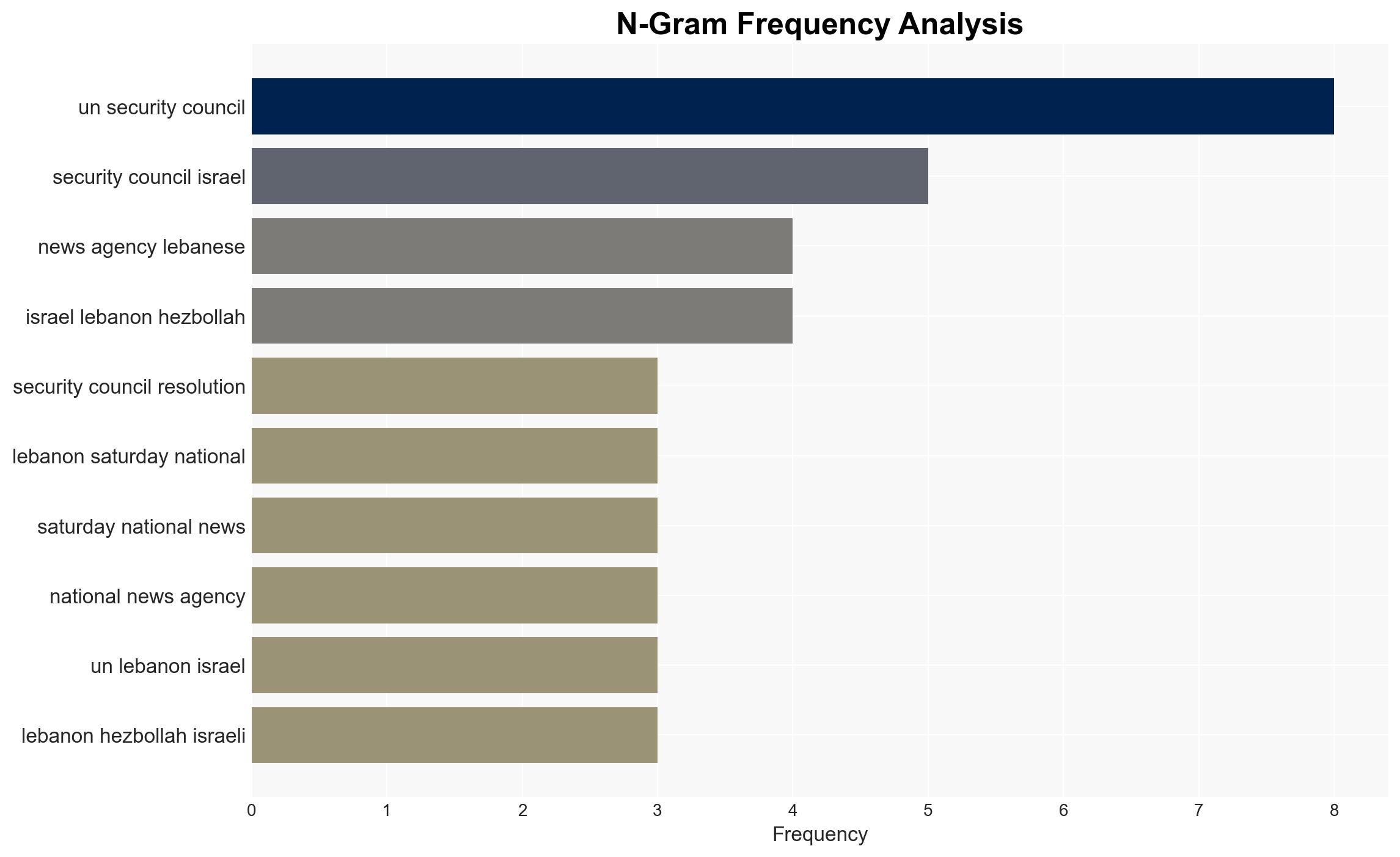UN peacekeepers say Israeli forces fired on them in southern Lebanon – Al Jazeera English
Published on: 2025-11-16
AI-powered OSINT brief from verified open sources. Automated NLP signal extraction with human verification. See our Methodology and Why WorldWideWatchers.
Intelligence Report:
1. BLUF (Bottom Line Up Front)
The most supported hypothesis is that the recent firing incident involving Israeli forces and UN peacekeepers in southern Lebanon was a result of misidentification due to poor weather conditions. This assessment is made with moderate confidence, given the complexity of the operational environment and historical tensions. Recommended actions include diplomatic engagement to reinforce ceasefire agreements and enhance communication protocols between involved parties to prevent future incidents.
2. Competing Hypotheses
Hypothesis 1: The firing incident was an accidental engagement due to poor visibility and misidentification of UNIFIL forces as hostile elements.
Hypothesis 2: The incident was a deliberate act by Israeli forces to test UNIFIL’s response and assert military presence in contested areas.
Hypothesis 1 is more likely due to the reported poor weather conditions and the historical context of similar incidents being attributed to misidentification. Hypothesis 2 is less supported but cannot be entirely dismissed given the strategic interests in the region.
3. Key Assumptions and Red Flags
Assumptions include the reliability of UNIFIL’s report and the intent behind Israeli military actions. A red flag is the potential bias in reporting from both sides, which may skew the perception of events. Deception indicators could involve misinformation campaigns by involved parties to manipulate international opinion.
4. Implications and Strategic Risks
The incident risks escalating tensions between Israel and Lebanon, potentially drawing in regional actors and affecting broader Middle Eastern stability. Politically, it could strain Israel’s relations with the UN and international community. Economically, sustained conflict could disrupt trade routes and investments in the region. Informationally, it may fuel propaganda efforts by Hezbollah and other groups.
5. Recommendations and Outlook
- Engage in diplomatic dialogue to reaffirm ceasefire agreements and address grievances.
- Enhance communication and identification protocols between Israeli forces and UNIFIL to prevent future misidentifications.
- Monitor regional actors’ responses to gauge potential shifts in alliances or escalations.
- Best-case scenario: Strengthened ceasefire and improved cooperation between UNIFIL and Israeli forces.
- Worst-case scenario: Escalation into broader conflict involving regional powers.
- Most-likely scenario: Continued low-level tensions with sporadic incidents, managed through diplomatic channels.
6. Key Individuals and Entities
UNIFIL (United Nations Interim Force in Lebanon), Israeli Defense Forces (IDF), Lebanese Army, Hezbollah.
7. Thematic Tags
Counter-Terrorism, Middle East Stability, International Relations, Peacekeeping Operations
Structured Analytic Techniques Applied
- ACH 2.0: Reconstruct likely threat actor intentions via hypothesis testing and structured refutation.
- Indicators Development: Track radicalization signals and propaganda patterns to anticipate operational planning.
- Narrative Pattern Analysis: Analyze spread/adaptation of ideological narratives for recruitment/incitement signals.
Explore more:
Counter-Terrorism Briefs ·
Daily Summary ·
Support us
·





